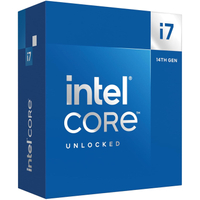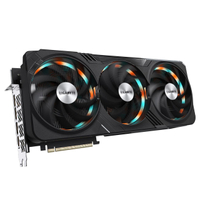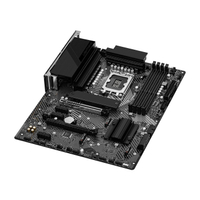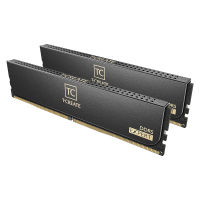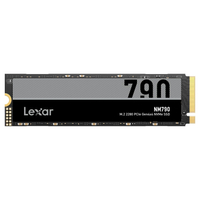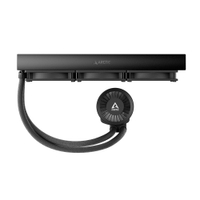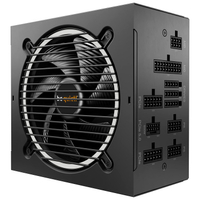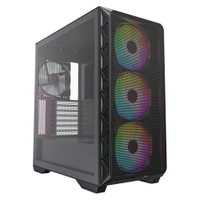I may not have beaten Alienware's discounted RTX 4090 machine, but I still say my PC built from the best Black Friday gaming deals is better
Say no to proprietary nonsense and say hello to a serious DIY that will be ace for years to come.
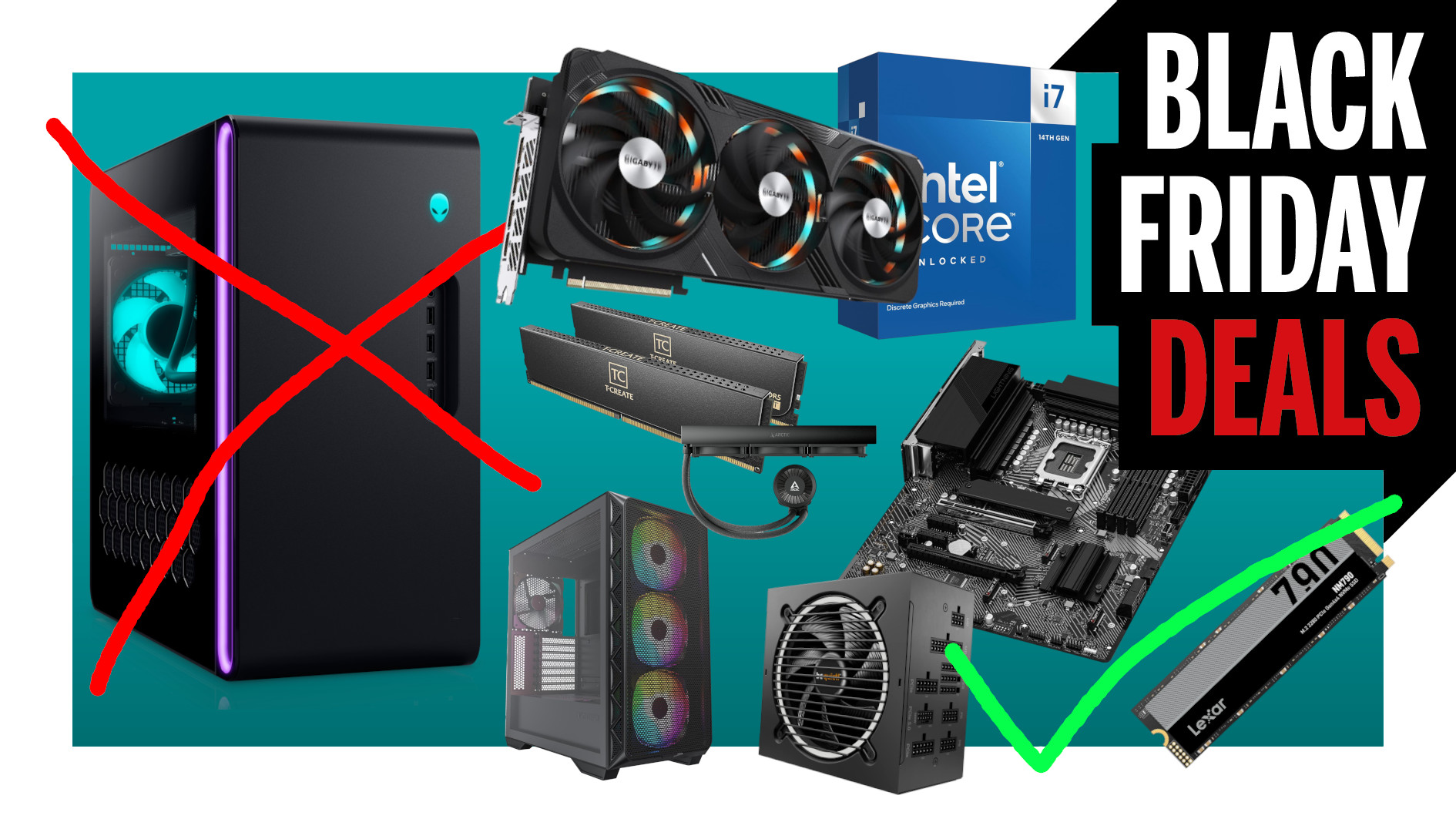
If you want to buy the cheapest possible RTX 4090 prebuilt gaming PC, then take a look at Alienware's Aurora R16 offer—at a cent shy of $3,000 you honestly won't find anything cheaper. Never one to back away from a challenge, I've been hunting through the Black Friday PC gaming deals to see if it's possible to build your own rig out of the various offers and undercut Dell's steep asking price.
Well, to cut to the chase, I couldn't. At least, not with hardware that's a match in terms of gaming performance, but I reckon I have something that's actually better, even though it's a little more expensive.
Quick Links
- Intel Core i7 14700KF - $328 at Amazon
- Gigabyte RTX 4090 - $2,160 at Newegg
- ASRock Z790 PG Lightning - $130 at Amazon
- Team Group 32 GB DDR5-6400 - $89 at Amazon
- Lexar NM790 2 TB SSD - $120 at Amazon
- Arctic Freezer III 360 - $90 at Amazon
- Be Quiet 1000W PSU - $115 at Amazon
- Montech Air 930 Max case - $66 at Newegg
Total - $3,098
CPU
Intel Core i7 14700KF | 20 cores | 28 threads | 5.6 GHz boost | 33 MB L3 cache | 125 W TDP | LGA1700 socket | $434.99 $327.93 at Amazon (save $107.06)
The Core i7 14700KF is probably Intel's best-balanced CPU for gaming and serious content creation workloads (read our review of the non-F version). Make sure whatever motherboard you use it in has the latest BIOS installed to avoid voltage problems and it's worth tweaking the power limits (increase PL1, decrease PL2) to stop it from getting overly toasty.
Yes, I know the Core i7 14700KF isn't the same chip as the 14900KF that's in the Alienware but when it comes to gaming, you won't notice the difference. That's because all the latter has over the former are more E-cores and a higher P-core boost clock. Neither of these will matter when you're gaming at 4K with an RTX 4090.
Graphics card
Gigabyte RTX 4090 | 24 GB GDDR6X | 16,384 shaders | 2,535 MHz boost | $2,169.98 $2,159.98 at Newegg (save $10)
It's the most powerful gaming graphics card money can buy and oh boy, is it a lot of money. Nothing else comes anywhere near it, though, when it comes to pushing pixels around your monitor. Plus it's comically huge and will utterly dominate the inside of your gaming rig.
And speaking of Nvidia's mightiest GPU, your only option of finding one at any vaguely sensible price is via Newegg's combo deals. The one I've picked is a Gigabyte RTX 4090 model, paired with an RTX 3060 of all things. I suppose you could sell it on and recoup a little bit of cash, or just use it as a GPU stand to stop the hulking 4090 from sagging.
Motherboard
ASRock Z790 PG Lightning/D4 | 5x PCIe slots | 4x M.2 slots | 8x USB rear ports | $239.99 $129.99 at Amazon (save $110)
You don't need to spend a fortune on a motherboard, especially when this ASRock model is available. It's not the best for overclocking and it doesn't have a huge number of USB ports on the rear IO panel, but it does boast four Gen4 M.2 slots for bags of storage.
In an attempt to keep the total cost down, I had to go with a fairly budget motherboard but the ASRock Z790 PG Lightning is a decent one, at least. It'll cope with the 14700KF just fine and while I'd prefer a board with more USB ports, I'm not going to get that for $130. Fortunately, it has lots of scope for storage with four M.2 slots that are all PCIe 4.0 compliant.
RAM
Team Group T-Create DDR5 | 32 GB (2x16) | 6,400 MT/s | CL32 | $94.99 $88.99 at Amazon (save $6)
What more do you want from your RAM? This Team Group kit is fast, stable, and sports nice timings. Sure it's not fancy-looking but for the money, you can't complain.
Intel's processors love fast RAM but anything over 6,400 MT/s becomes a bit of a lottery as to whether the CPU and motherboard cope with a higher speed. The Team Group 32 GB DDR5 kit I've picked is ideal for pretty much any Intel setup. Rated to 6400 MT/s with a CAS latency of 32 cycles, it's genuinely speedy. You're not getting any fancy RGB lights but that's no big deal when it's just $89 in price.
SSD
Lexar NM790 | 2 TB | NVMe | PCIe 4.0 | 7,400 MB/s read | 6,500 MB/s write | $189.99 $119.99 at Amazon (save $70)
Fast, spacious, and cool when under load. The NM790 has everything you want from a gaming SSD. The fact that it only costs $120 is quite frankly remarkable.
My choice of storage is the excellent Lexar NM790 in 2 TB form. You could save a bit of cash by going with 1 TB but when you're spending $3,000 on a gaming rig, you might as well get a decent amount of storage now rather than later.
Despite having no DRAM to boost heavy writing loads, the NM790 is no slouch for gaming and general use, as we found with the 4 TB version when we reviewed it. Lexar might not be a well-known name just yet, but it will do in time if it keeps on making brilliant SSDs like this one.
CPU Cooler
Arctic Freezer III 360 | 3x 120 mm fans | 360 mm radiator | 200-1,900 RPM | $129.99 $90.08 at Amazon (save $39.91)
Fast, spacious, and cool when under load. The NM790 has everything you want from a gaming SSD. The fact that it only costs $120 is quite frankly remarkable.
Intel's Raptor Lake processors just love power and the more you let them use, the better they will perform. Unfortunately, all that energy ultimately becomes heat, so if you use a performance power profile in the motherboard BIOS (253 W for short and long period limits), that Core i7 14700KF will get super hot very quickly.
Unless you use this Arctic Liquid Freezer III 360 AIO cooler, that is. All of the models in this range are by far the best liquid coolers you can buy right now, thanks to their low cost and excellent performance.
Just a word of warning, though: They are an absolute pig to install, as you have to remove the default Intel mounting bracket from the motherboard first. The radiator is also big, thick, and heavy, and the pump is awkward to screw down.
PSU
Be Quiet! Pure Power 12 M | 1000 W | Gold efficiency | ATX 3.1 | 12VHPWR socket | Fully modular | $164.90 $114.90 at Amazon (save $50)
It's not fancy nor feature-rich, but this Be Quiet! power supply unit will handle 14700KF and 4090 combinations just fine. Best of all is the dedicated 12VHPWR socket—wave goodbye to adapters!
The RTX 4090 has a peak board power limit of 450 W and coupled with a Core i7 14700KF set to 253 W, your power supply unit will need to cope with a maximum demand of over 700 W. I've gone with a 1000 W PSU simply because the peak efficiency is when it's under 50% or so load, and the extra headroom helps to keep power excursions (aka power spikes under control).
For me, though, its best feature is the dedicated 12VHPWR socket. That means you can hook up the RTX 4090 to just one cable that's included with the PSU and never have to worry about adapters or multiple cables.
PC case
Montech Air 930 Max | 3x 140 mm ARGB fans | 1x 140 mm fan | Glass panel | 360 mm radiator support | $74.99 $65.90 at Newegg (save $9.09)
What more do you really need from a PC case? This Montech offering is spacious inside and comes with four 140 mm fans pre-installed, three of which are ARGB. That kind of airflow will cool the hottest of gaming PCs.
I'll admit that I chose the Montech mostly on the basis of its very low price but I also wanted some specific features. The most important of which was plenty of room for the Arctic Freezer III 360 cooler and the Air 930 Max doesn't disappoint in that aspect. Plus it comes with four fans pre-installed, helping to save you a bit more cash.
More expensive but better
Now, all of the above will set you back $3,097.76 so I'm $97.77 over the Alienware's price tag.
"Hang on", you may cry. "That Alienware has 64 GB of RAM, plus a better CPU, and it's cheaper." That's all very true but here's why my build is actually better.
That Aurora R16 RTX 4090 comes with a 240 mm AIO cooler and I'll tell you now, it's just enough for a full-power 14900KF. The CPU will end up hitting its thermal limits and that'll impact the boost clocks, whereas my setup will have no such concerns, even if you use the Intel performance power profile in the motherboard.
Dell loaded up the R16 with a mountain of RAM but it's only rated to 5200 MT/s—my kit offers 23% more bandwidth and I'd bet my last dollar that it has a much better CAS latency than the Dell set.
The main reason why my build is better, though, is upgradeability. While both systems are limited in terms of what CPU you'll be able to install (Intel's latest Core Ultra 200S chips won't fit in an LGA1700 motherboard), none of my chosen components are proprietary. That means you'll be able to easily swap and move things about at will.
Dell uses its own motherboard and chassis design, so the connectors are unique to them, making it much harder to do any kind of upgrade or expansion.
Alternative builds
If you live near a Micro Center store, you can save a bit more on the above build. You can't buy these bundles online (so you will need to head into a store), but you can get a Core i7 14700K deal for a cent under $500 that includes a motherboard and 32 GB RAM kit. That's around $47 cheaper than my choice of CPU, mobo, and RAM.
If you don't care about cores and what something that you can install a better CPU in at some point in the future, then you need to head down the AMD route. Micro Center has a Ryzen 7 9700X bundle for $430. That won't be faster than the 14700KF in lots of games but the 9700X isn't that far off, as I found when I reviewed it.
Or you could just blow the budget and get a Ryzen 7 7800X3D bundle ($600) and build yourself an outstanding gaming PC. You're looking at nearly $3,151 for the total but what a machine it will be.
👉Check out all the Newegg Black Friday PC gaming deals right here👈
The biggest gaming news, reviews and hardware deals
Keep up to date with the most important stories and the best deals, as picked by the PC Gamer team.

Nick, gaming, and computers all first met in 1981, with the love affair starting on a Sinclair ZX81 in kit form and a book on ZX Basic. He ended up becoming a physics and IT teacher, but by the late 1990s decided it was time to cut his teeth writing for a long defunct UK tech site. He went on to do the same at Madonion, helping to write the help files for 3DMark and PCMark. After a short stint working at Beyond3D.com, Nick joined Futuremark (MadOnion rebranded) full-time, as editor-in-chief for its gaming and hardware section, YouGamers. After the site shutdown, he became an engineering and computing lecturer for many years, but missed the writing bug. Cue four years at TechSpot.com and over 100 long articles on anything and everything. He freely admits to being far too obsessed with GPUs and open world grindy RPGs, but who isn't these days?
